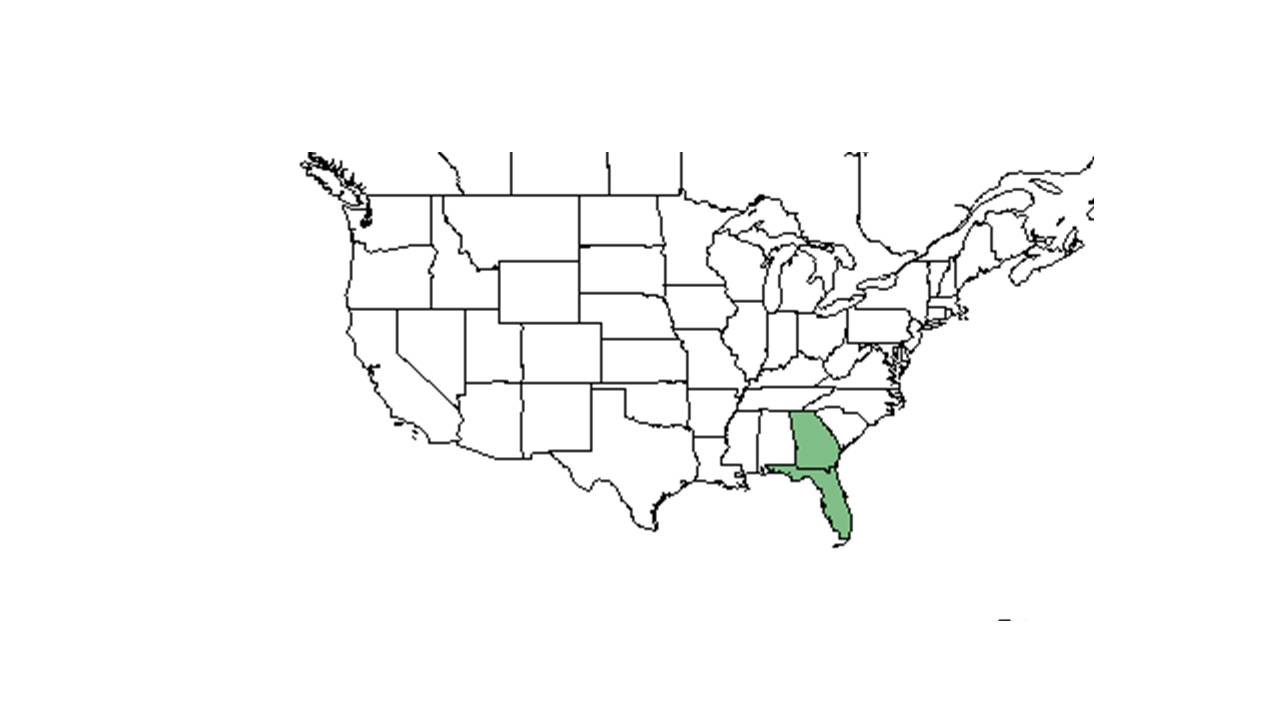Ageratina jucunda
| Ageratina jucunda | |
|---|---|
Error creating thumbnail: Unable to save thumbnail to destination
| |
| Scientific classification | |
| Kingdom: | Plantae |
| Division: | Magnoliophyta - Flowering plants |
| Class: | Magnoliopsida - Dicotyledons |
| Order: | Asterales |
| Family: | Asteraceae ⁄ Compositae |
| Genus: | Ageratina |
| Species: | A. jucunda |
| Binomial name | |
| Ageratina jucunda (Greene) Clewell & Woot. | |

| |
| Natural range of Ageratina jucunda from USDA NRCS Plants Database. | |
Common names: Hammock snakeroot; Small leaf Thoroughwort
Synonym: Eupatorium jucundum Greene
Contents
Description
It is a perennial (Hall 1993). It is common in all of Florida; flowers from fall to winter (Hall 1993).
Distribution
Ageratina jucunda is endemic to the southeastern United States, only known to occur in Florida and a few counties in Georgia. [1]
Ecology
Habitat
This species is found in a wide variety of habitat types including longleaf pine-saw palmetto, dunes, rocky environments, old fields, ecotone from scrub oak sand ridge to shrub bof, stream banks, and dry flatwoods.[2] This species can be found in grazed, rocky, and open deciduous woodlands as well. It is xeric to dry-mesic habitats, including sand pine scrub and longleaf pine-turkey oak sand ridges. It can also occur along roadsides and in abandoned fields where such habitats used to occur. Ageratina jucunda becomes threatened by habitat loss and fire suppression.[1]. In addition, it is found in sandhills and hammocks (Wunderlin and Hansen 2003). The soils this species prefers is drying loamy sand with sandy, damp, and rich humus soils (FSU Herbarium). This is a resilient species that has been found growing in numerous disturbed areas including behind shopping malls in weedy woods, phosphate quarries in hardwoods, on and alongside paved roads, rocky plantation pastures, hardwood clearings, pine clearings, near grottoes and edges of of field tracks (FSU Herbarium). This species thrives in environments with moderate shade to high light intensity (FSU Herbarium).
Phenology
It is perennial. [3][2] It is been seen flowering in the month of August and October through January and fruiting during August and from October-December (FSU Herbarium).
Seed dispersal
Seed bank and germination
Fire ecology
Long-term fire management is important for survival and it's an associate species of longleaf pine and wiregrass communities. [1]
Pollination
Use by animals
Stephanie Sanchez observed a Malachite butterfly feeding on a snakeroot flower.[4]
Diseases and parasites
Conservation and Management
Cultivation and restoration
Photo Gallery
References and notes
Florida State University Robert K. Godfrey Herbarium database. URL: http://herbarium.bio.fsu.edu. Last accessed: June 2014. Collectors: Jame Amoroso, Bian Tan, John B. Nelson, O. Lakela, J. P. Gillespie, Robert K. Godfrey, Robert L. Lazor, John Lazor, W. G. D'Arcy, Robert Kral, Elmer C. Prichard, Andre F. Clewell, Loran C. Anderson, K. Craddock Burks, H. S. Conard, E. Bell, and Jean W. Wooten. States and Counties: Florida: Columbia, Volusia, Hillsborough, Marion, Taylor, Alachua, Sarasota, Sumter, Polk, Citrus, St. Johns, Leon, Hernando, Jefferson, Suwanee, and Levy.
Hall, David W. Illustrated Plants of Florida and the Coastal Plain: based on the collections of Leland and Lucy Baltzell. 1993. A Maupin House Book. Gainesville. 98. Print.
Wunderlin, Richard P. and Bruce F. Hansen. Guide to the Vascular Plants of Florida. Second edition. 2003. University Press of Florida: Gainesville/Tallahassee/Tampa/Boca Raton/Pensacola/Orlando/Miami/Jacksonville/Ft. Myers. 295. Print.
- ↑ 1.0 1.1 1.2 Natureserve http://www.natureserve.org/, accessed 15 May 2015.
- ↑ 2.0 2.1 Flora of North America http://floranorthamerica.org/, accessed 15 May 2015.
- ↑ USDA NRCS National Plant Data team http://plants.usda.gov/java/,accessed 15 May 2015.
- ↑ http://butterflies.heuristron.net/plants/ageratinaJucunda.html, accessed 15 May 2015).